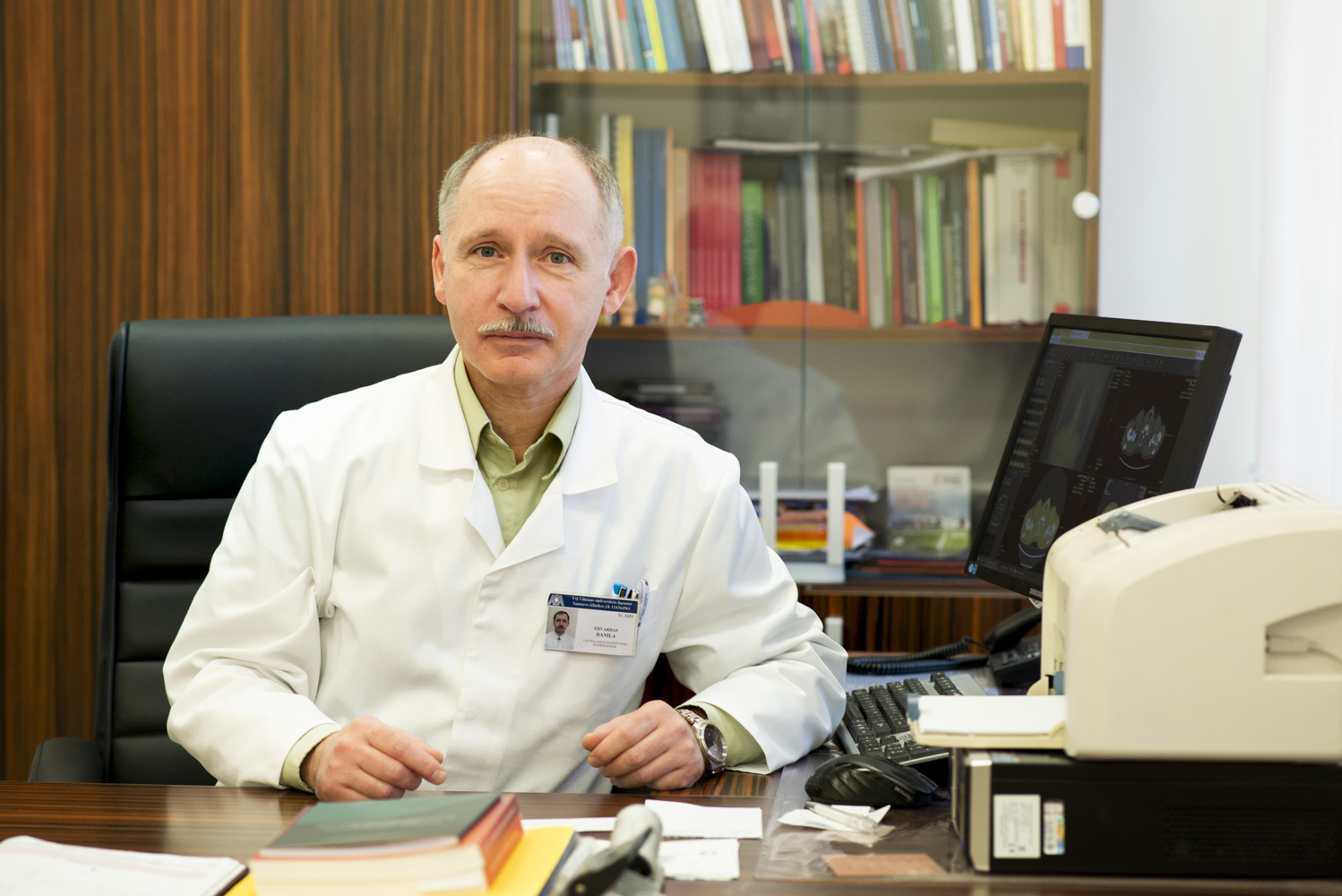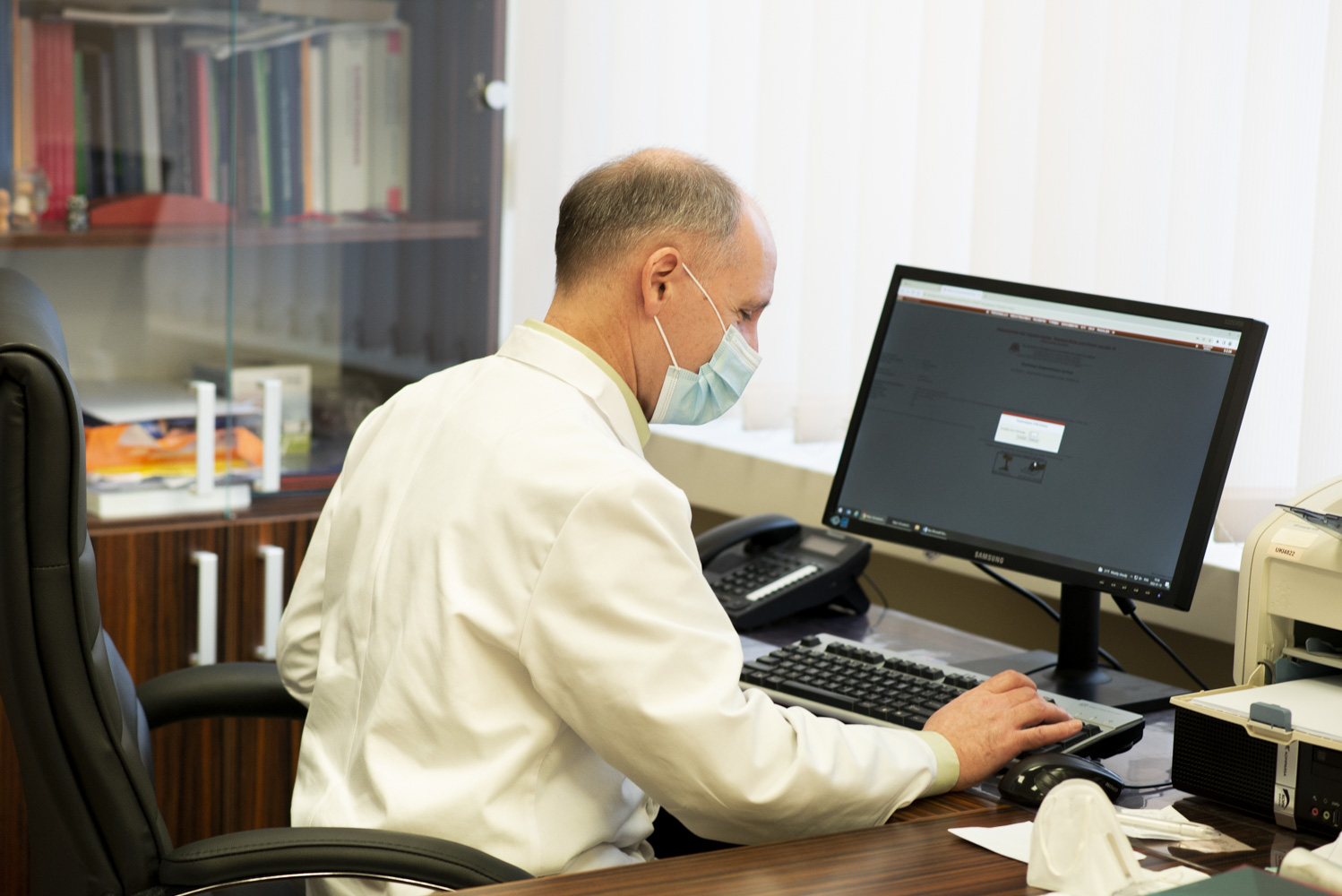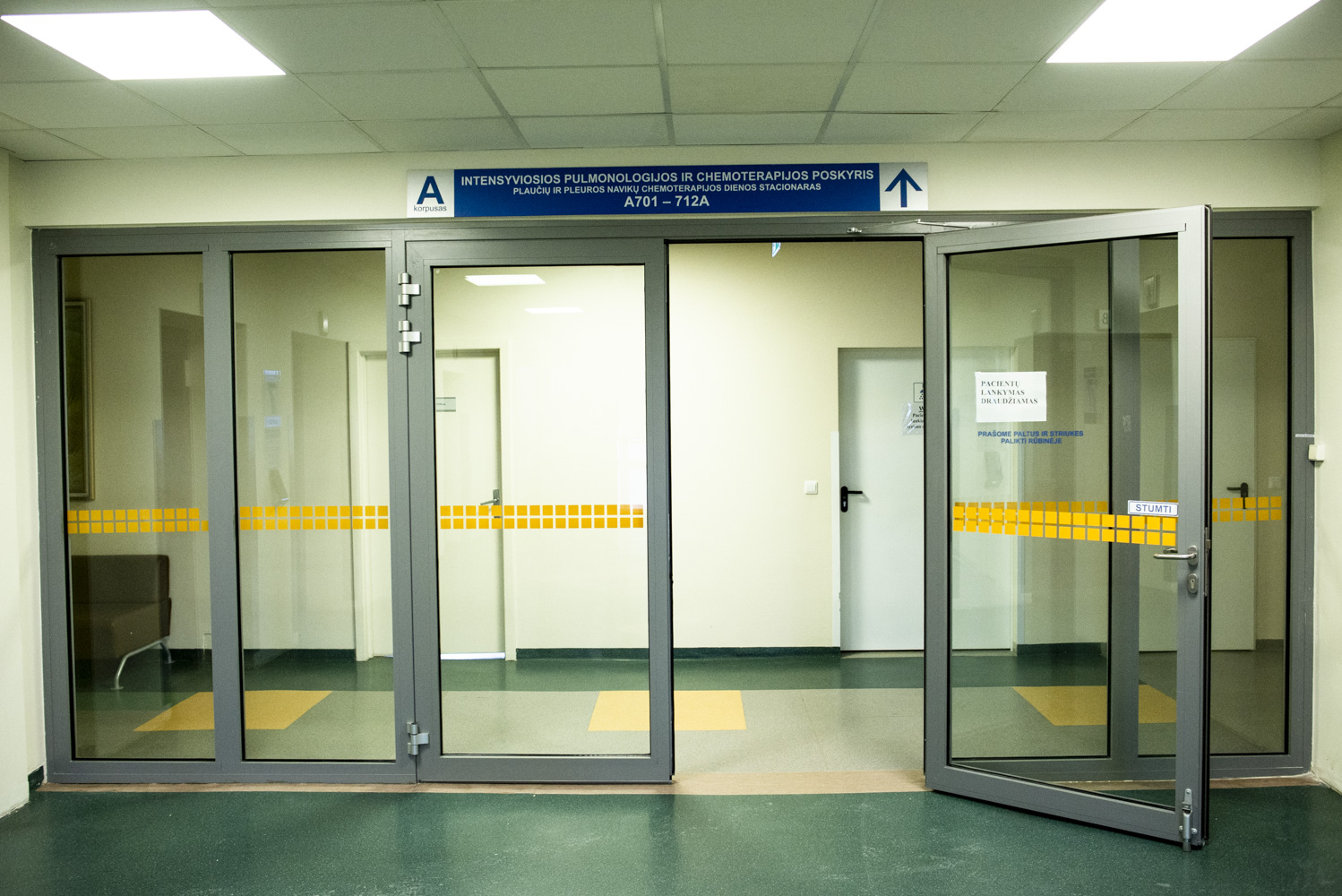
Each year more and more people are diagnosed with cancer. According to the World Health Organization, over 19 million cases were diagnosed globally in 2020. Lung cancer is among the most common cancers. How does this disease affect the body? Is it inherited? And finally, why is lung cancer often only diagnosed in later stages?
On the occasion of World Cancer Day, Professor Edvardas Danila of the Clinic of Chest Diseases, Immunology and Allergology at the Faculty of Medicine of Vilnius University, pulmonologist and head of the Centre for Pulmonology and Allergology at Vilnius University Hospital Santaros Klinikos, agreed to answer these and other questions.
What is lung cancer? How does this disease affect the cells in the body?
It is a malignant tumour in the lungs. The tumour-altered cells have, let’s say, a life of their own. They begin to multiply and initially spread locally, then they get into the bloodstream and the lymphatic system and spread throughout the body. Lung cancer, like most tumours in other organs, is almost uncontrollable by the body and behaves as it wishes.
What factors influence the development of lung cancer?
There are, in fact, a number of factors. Even small doses of substances such as asbestos, silicon, particulate matter, etc. cause inflammation. However, tobacco smoking is undoubtedly the most important factor. When a person smokes, i.e. inhales products generated by burning tobacco into the lungs, reactive oxygen compounds are formed, which damage the cells of the trachea, bronchi and lungs. The cells become increasingly damaged, and their structure and genetic information change. The cells exposed to long-term harmful effects mutate, becoming anti-cancer cells and eventually cancer cells.
Cancer cells acquire completely different characteristics from normal cells in the body. For example, cells normally live and die like everything in nature – they have a beginning and an end. However, cancer cells are different and do not respond to the suppression signals from the body so they have practically unlimited possibilities to multiply. They behave like an aggressor in the body. After stopping smoking, the body is usually able to correct many cell mutations, and even reverse some stages of cancer development.
To what extent is genetic predisposition important for the development of cancer?
Lung tumours are not inherited, but there could be a greater risk of morbidity. In the absence of a damaging factor, however, the genetic predisposition (i.e. the risk of cancer) in most cases will remain just susceptibility.

Lung cancer is often detected in later stages due to the specificity of the organ. Since the lungs do not have a nervous system, there is no discomfort or pain due to changes in the lungs. So can it be assumed that many cases of lung cancer are diagnosed accidentally?
It differs. The lungs are a very large organ; consists of the respiratory tract – trachea, bronchi and lung tissues (parenchyma). To make it easier to understand, let’s imagine the lungs as a large tree. The trachea is the tree trunk, bronchi – its branches, and lung tissues – leaves. Lung cancer may occur in any of these segments. If it occurs, for example, in a “larger branch of the tree”, after some time the person begins to feel an irritation, and an urge to cough.
Since it is usually smokers who most frequently get lung cancer, coughing for them is so natural that they get used to it, and do not pay any attention to their cough. This means that, unlike non-smokers, they do not feel the first signals of the start of the disease sent by the body.
If cancer develops in lung tissues that do not have receptors, then it does not cause any symptoms, except for the rare cases when the cancer begins to develop near the pulmonary pleurae. In this case, the person may feel an ache, less often pain, in the chest area. Finally, lung cancer may manifest by metastasizing into other organs, e.g. through bone pain, brain dysfunction, etc.
How has lung cancer diagnostics changed in recent decades? What are the tools used for cancer diagnostics today?
Over the past decades, medicine has progressed. One of the oldest diagnostic tools are chest x-rays. It is a very good tool, but only helps to detect lung cancer in peripheral parts of the lungs when the tumour is about one centimetre or more. A tumour of this size means billions of cancer cells, I mean billions! And in most cases, they have already spread throughout the body.
If a new radiographic image is very precisely compared to a previous radiographic image, it is sometimes possible to detect a tumour of about half a centimetre in size. However, in real life, when a radiologist or pulmonologist reviews dozens of tests a day, he usually does not have the opportunity to compare the tests with great precision. For this reason, chest radiography is not a good method for early detection of lung cancer. Now this problem is solved using computed tomography (CT scan) and special AI programs that analyse lung images.
Following the introduction of CT scans in everyday medical diagnosis, there was a huge leap in the early detection of lung cancer. The new tool can identify tumours 2-3 millimetres in size, continue monitoring it, assess the risk and take action. In some countries, CT scans have become the main tool for early diagnosis of lung cancer.
How can we reduce the likelihood of lung cancer? What preventive measures can be taken?
The best prevention is non-smoking and avoiding other risk factors (the most important of which are small particles of inorganic substances). There is no prevention using drugs. No synthetic vitamins work as preventive measures, and some of them even increase the risk of lung cancer. Only natural vitamins obtained with fruits and vegetables have a preventive effect. However, it is difficult to measure their effectiveness, extensive testing is required.
An early screening programme – a chest CT scan performed when a person does not yet have any symptoms – plays a great role in prevention. As I have mentioned earlier, in many cases a person may feel no symptoms at an early stage of lung cancer.

A comparative review of changes in the incidence of cancer in Lithuania in 1985 and 2010 shows that overall cancer is on the rise. However, while the incidence of trachea and lung cancer in men is slowly decreasing, it remains stable in women. Such statistics gives some hope.
There was indeed hope, but a subsequent, global study showed that the incidence of lung cancer has not decreased, including in countries where smoking has decreased significantly. Environmental pollution, expanding industries and other factors mean this disease remains one of the deadliest forms of cancer. Compared to mortality from other types of cancer, lung cancer is the number 1-2 killer in men and number 3-4 in women.
Paradoxically, the overall trends show that the situation with lung cancer in developed countries remains unchanged. Malignant tumours are the most common cause of death worldwide. There is hope, however, in improving methods of treatment.
Tell us what they are
In recent years, more has become known about the nature of lung and other organ cancers. Molecular biology and genetic methods have become significant in clinical practice. With their help you can learn a lot about how cancer appears, grows, and manages to “hide” from the immune system and how to help the immune system to detect it. In recent years, immunotherapy, biological therapy, and the so-called targeted therapy, when drugs adjust the genetic changes caused by cancer and block the biological mechanism of how the tumour operates, have been used in daily clinical practice. These methods have allowed us to extend people’s lives and improve the quality of life compared to the situation 10-20 years ago.
All trends suggest that in the coming decades once-fatal lung cancers will be treated as a chronic disease using various treatment methods, for example, chemotherapy, biological therapy, immunotherapy, surgical or radiation therapy. However, there are no methods, and hardly any will be available in the near future, that will completely cure chronic cancer.
So, each of us should take care of ourselves by avoiding risk factors and having regular preventive health checks. Health as the greatest treasure may sound banal, unfortunately, however, we frequently only remember this saying when we get sick.

